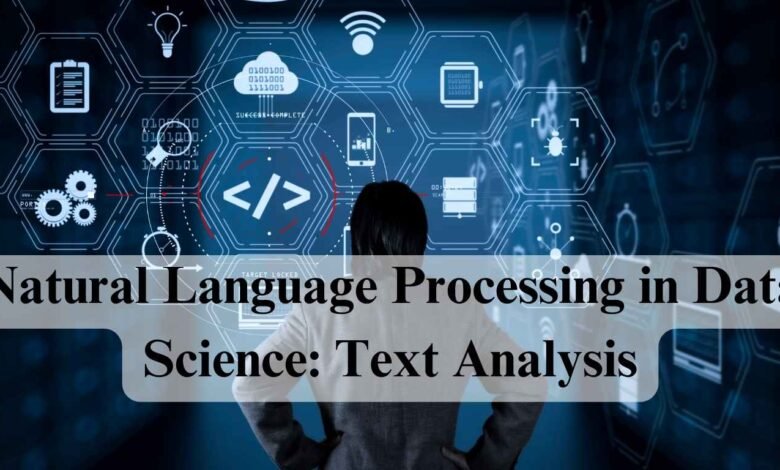
Introduction
Natural Language Processing (NLP) stands at the forefront of innovation in data science, unlocking the profound potential embedded within the vast expanse of textual information. In the realm, we embark on a journey to unravel the intricacies of language, transforming unstructured text into actionable insights.
NLP, a subfield of artificial intelligence, empowers machines to comprehend, interpret, and respond to human language. This introductory exploration delves into the fundamental role of NLP in processing linguistic structures, from tokenization to language models. As we navigate the complexities of text analysis, we discover how NLP techniques, such as sentiment analysis, named entity recognition, and text summarization, open avenues for understanding emotions, extracting valuable information, and distilling vast textual content into meaningful insights.
Fundamentals of Natural Language Processing
- Decoding Linguistic Structures:
At the core of NLP lies the intricate task of decoding linguistic structures. Techniques such as tokenization break down text into individual units, be it words or phrases, enabling machines to understand the fundamental components of language. Stemming and lemmatization further refine this process by reducing words to their root forms, ensuring a standardized representation for analysis. These foundational concepts form the bedrock of NLP, allowing practitioners to navigate the nuances of language intricacies.
- Language Models:
- Language models play a pivotal role in NLP, offering frameworks for machines to comprehend and generate human-like text. From statistical models to the recent advancements in transformer-based models like BERT and GPT, understanding these models is key to effective text analysis. These models enable machines to grasp context, semantics, and syntactic structures, laying the groundwork for more sophisticated NLP applications.
Text Preprocessing Techniques
- Cleaning Textual Noise:
Before delving into analysis, textual data often requires preprocessing to handle noise and irrelevant elements. Removing punctuation, stopwords, and special characters streamlines the text, ensuring that subsequent analyses focus on meaningful content. Techniques like lowercasing standardize text, reducing the impact of case variations. Preprocessing is the gateway to transforming raw text into a format conducive to extraction of valuable insights.
- Feature Extraction:
In the numerical realm of machine learning, feature extraction bridges the gap between raw text and algorithmic analysis. Methods like TF-IDF (Term Frequency-Inverse Document Frequency) and word embeddings convert textual information into numeric vectors. This transformation facilitates the application of machine learning algorithms, where the numerical representation of text becomes the foundation for uncovering patterns and deriving meaningful insights.
As we delve into the fundamentals of NLP, the intricate dance between linguistic structures and machine-understandable models becomes apparent. Tokenization and language models pave the way for sophisticated analysis, while preprocessing and feature extraction set the stage for turning raw text into a structured format ready for exploration. These fundamentals form the cornerstone of mastering NLP, a journey enriched by the multifaceted applications awaiting in the realm of text analysis.
Sentiment Analysis
- Emotion in Text:
Sentiment analysis, a cornerstone of NLP, delves into the emotional undercurrents embedded within textual content. This process involves discerning the sentiment expressed, whether positive, negative, or neutral. Understanding emotions in text is pivotal for industries ranging from marketing, where customer sentiments influence strategies, to social media monitoring, where public reactions shape narratives.
- Machine Learning for Sentiment:
The implementation of machine learning algorithms becomes paramount in sentiment analysis. These algorithms learn from labeled datasets, where sentiments are annotated, and use this knowledge to classify the sentiment of unseen text. From traditional methods like Naive Bayes to sophisticated deep learning approaches, machine learning breathes life into sentiment analysis, allowing for nuanced understanding of the emotional tone in textual communication.
What is Named Entity Recognition (NER)?
- Identifying Entities:
Named Entity Recognition (NER) focuses on extracting entities, such as names, locations, organizations, and more, from text. This process involves identifying and categorizing these entities, enriching the textual data with structured information. NER finds applications in diverse fields, from information retrieval in search engines to enhancing the capabilities of virtual assistants.
- Applications in Information Extraction:
The prowess of NER extends beyond entity identification; it becomes instrumental in information extraction from unstructured text. By recognizing and categorizing entities, NER facilitates the creation of knowledge graphs, enabling a more profound understanding of relationships and connections within textual content. This capability is invaluable for industries seeking to extract actionable insights from large volumes of unstructured data.
Sentiment analysis and Named Entity Recognition exemplify the transformative impact of NLP on text analysis. The ability to discern emotions and extract structured information from unstructured text positions NLP as a powerful tool in deciphering the intricacies of language. As we navigate these applications, the convergence of linguistic understanding and machine learning algorithms becomes increasingly apparent, heralding a future where machines comprehend not just words but the nuanced context and entities within them.
Text Summarization
- Distilling Information:
Text summarization addresses the challenge of distilling relevant information from lengthy textual content. Extractive summarization methods identify and pull key sentences directly from the text, while abstractive methods generate concise summaries by interpreting and rephrasing the content. This process streamlines information consumption, making it more accessible and efficient for decision-makers and readers.
- Extractive vs. Abstractive Summarization:
Extractive summarization relies on selecting existing sentences that are deemed crucial to the overall meaning of the text. In contrast, abstractive summarization involves creating new sentences that convey the essence of the content in a condensed form. The choice between these approaches depends on the context and the desired level of abstraction in the summary.
Document Similarity and Clustering
- Finding Connections:
Document similarity and clustering techniques play a pivotal role in identifying relationships between pieces of text. These methods measure the similarity between documents, allowing for the categorization of related content. Document clustering further organizes textual data into groups, providing a structured approach to managing and understanding large volumes of information.
- Applications in Content Organization:
The ability to measure document similarity and cluster related content is integral to organizing and categorizing textual data. From content recommendation systems, where similar documents are suggested to users, to content management, where related documents are grouped for efficient retrieval, these applications enhance the accessibility and utility of textual information.
As we explore text summarization and document similarity, the focus shifts to distillation and organization. The art of summarizing vast textual content and identifying connections between documents contributes to the efficiency of information consumption and management. These applications, deeply rooted in NLP techniques, underscore the adaptability of natural language processing in addressing diverse challenges within the realm of text analysis.
Conclusion
In traversing the landscape of Natural Language Processing in Data Science, we’ve unravelled the intricate dance between linguistic intricacies and machine understanding. From decoding the fundamentals of NLP to exploring applications like sentiment analysis, named entity recognition, text summarization, and document similarity, the transformative power of NLP in text analysis is undeniable. As we envision a future where machines comprehend the nuances of human language, the significance of enrolling in institutes which provide the Best Data Science Course in Noida, Goa, Jaipur, Shimla, Patna, etc, becomes paramount. Delving into the heart of innovation and learning, such courses not only equip individuals with the technical prowess of NLP but also nurture a deep understanding of how language shapes the landscape of data science. The journey continues, beckoning those eager to master the art of deciphering the language of data in the vibrant hub of Delhi’s educational excellence.



